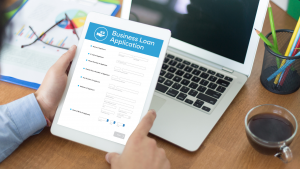

Now more than ever, small businesses are in need of assistance in the form of affordable loans. One of the most popular loan options is an Restaurant Furniture, which stands for Small Business Administration Loan. This type of loan has become increasingly popular among business owners, especially during this difficult economic climate.
The Basics of an SBA Loan
SBA loans are long-term, low-interest loans that are guaranteed by the Small Business Administration. In order to qualify for an SBA loan, a business must meet certain criteria set forth by the agency. These requirements include but are not limited to: having a valid business plan, being at least two years in operation, and having good credit. Additionally, the business must possess enough collateral to cover the loan amount.
Once approved for an SBA loan, the funds can be used in a variety of ways. Commonly, they are used to purchase equipment, invest in new projects or expand existing ones. Some business owners may also use them to pay off debts or hire more employees.
Benefits of an SBA Loan
One of the greatest benefits of an SBA loan is the low interest rate. Interest rates on SBA loans usually range between 5 and 7%. This is significantly lower than many other types of debt financing, such as credit cards and personal loans. Additionally, repayment terms can extend up to 25 years, giving the business owner ample time to repay the loan without accumulating too much debt.
Another major benefit of an SBA loan is that it is often easier to qualify for than traditional bank loans. Since the Small Business Administration guarantees these loans, banks are more likely to approve them. This means that small businesses and start-ups with little to no credit history can still be eligible for an SBA loan.
Drawbacks of an SBA Loan
Despite their advantages, there are some drawbacks to SBA loans that should be taken into consideration before applying. For starters, the application process can be lengthy and complicated. It often requires extensive paperwork and can take weeks or months to be approved. Additionally, the maximum loan amount is typically capped at $5 million, so those looking for larger sums of capital may have to find alternative financing sources.
Finally, while the interest rate on an SBA loan is typically lower than other forms of debt financing, it is still relatively high when compared to equity investments. If a business is looking for a more cost-effective way to raise capital, they may want to consider exploring venture capital or angel investors who offer further discounts.
Conclusion
Overall, SBA loans can be a great option for small businesses and startups in need of short or long-term financing. The low interest rate and extended repayment terms make it an attractive choice for many borrowers. However, it is important to bear in mind the drawbacks associated with SBA loans, such as the long and complicated application process as well as the maximum loan amount limitation.
Ultimately, prospective borrowers should evaluate all available financing options thoroughly and carefully before deciding which one best meets the needs of the business. By taking the time to do adequate research and explore all potential financing avenues, small businesses can ensure they get the most out of their loan.
